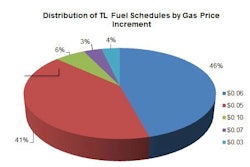
The concept of utilizing a Third Party Logistics (3PL) company to manage a functional area or entire supply has not really changed over the years. What has changed are the complexities and constant requests by organizations for 3PLs to provide a myriad of service offerings to navigate changes such as demand, security, climate and consumer preferences.
Traditionally, 3PLs provide services such as warehousing, transportation and information technology to organizations across all industry sectors. In fact, according to Capgemini’s 2011 3PL study, distribution and transportation are still the top two services outsourced by an organization.
Global trends such as emerging markets, carbon emission concerns, cargo theft, terrorism threats and a seemingly endless string of natural disasters have 3PLs working with their clients to develop strategic solutions in the areas of contingency planning, disaster recovery and supply chain security. Some examples include:
- Global natural disasters—including Hurricane Katrina and the Tohuko Earthquake and Tsunami—over the last several years led 3PLs to develop documented contingency and disaster planning procedures which are available to shippers.
- Companies are reducing the cost of theft by working closely with 3PLs to set up implementable processes while improving the efficiency of the supply chain.
- 3PLs are providing supply chain visibility for high-value products which is critical for inventory availability, order status and security while in transit.
These days, technologies such as tracking solutions, GPS, driver training and engine shut-down capabilities are requirements for 3PLs by shippers. In addition, a growing number of companies are addressing supply chain complexities via supply chain control towers—central hubs of technology, organization and processes which capture and use supply chain data to provide enhanced visibility for short- and long-term decision making.
Environmental concerns
Concern over environmental issues such as carbon emissions and fuel consumption; and manufacturing by products have led some 3PLs to develop strategies around packaging issues. Each year billions of dollars in excess inventory are moved through the supply chain and 3PLs work with manufacturers on postponement strategies to reduce inventories, which lead to fewer goods being transported, thereby reducing carbon emissions and fuel consumption. In addition, 3PLs are providing repair and refurbish services which place returned items back into the marketplace rather than discard merchandise.
Supply chain security
Shippers in the Asia Pacific and Latin America regions are much more likely to increase their use of outsourcing than in the U.S. or Europe. However, securities across emerging markets that don’t have all the protections available have become a challenge. The use of technologies, such as visible tracking shipment tracking solutions, provided security-related assistance.
In addition, increased demand for high value items—specifically in the electronics, pharmaceutical and clothing markets—is the main reason cargo theft is expected to rise over the next five years. Consequently, 3PLs are providing supply chain visibility for high value products, which is critical to provide inventory availability, order status and security while in transit. Companies can also reduce the cost of theft by working closely with 3PLs to set up implementable processes while improving the efficiency of the supply chain.
Changing the logistics landscape
Manufacturers and retailers are looking to collaborate in stimulating ways—such as through information sharing and collaborative warehouse networks—to create an integrated supply chain. Several prominent consumer products industry trade groups are already working with leading consumer products goods manufacturers to envision, develop, pilot and implement collaborative logistics initiatives. These concepts and programs have the potential to change the logistics landscape.
Consumer direct and multi-channel distribution
Consumers are changing the way they purchase items, causing growth of small package and parcel shipments and a shift in replenishment activities to more frequent, smaller orders. Consumer package goods (CPG) companies, distributors and service providers are being asked to provide store- and shelf-level services. In addition, retailers are working to develop demand-driven fulfillment & replenishment models while CPG companies working to respond to these models.
Obviously, the 3PL industry will have to overcome a significant amount of obstacles in the coming years. Complex supply chain networks across most industry verticals and competition for business from direct competitors—or niche players trying to increase market share—will continue to challenge 3PL organizations. The ability to compete will depend on how well a 3PL can adapt to the ever-changing global environment. An organization that is able to benefit from the service offerings provided will not only improve their service levels and reduce costs throughout the supply chain but will also improve shareholder value if applicable.














![Pros To Know 2026 [color]](https://img.sdcexec.com/mindful/acbm/workspaces/default/uploads/2025/08/prostoknow-2026-color.mduFvhpgMk.png?ar=16%3A9&auto=format%2Ccompress&bg=fff&fill-color=fff&fit=fill&h=135&q=70&w=240)



